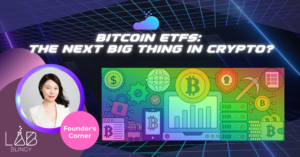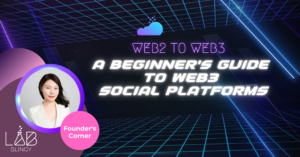How the Metaverse is changing the face of education
Have you been paying attention to the rise of the metaverse? What about its potential to change the face of education? As a blockchain enthusiast, teacher, or student, you should be. The metaverse is rapidly becoming a new frontier for education, and it can potentially revolutionize how we teach and learn.
The metaverse is poised to take over the traditional learning experience, from immersive virtual classrooms to digital credentials. And although this may seem to some like an exciting development, there are doubts about how this could affect our kids’—and our own—futures. Thankfully, we’re far from blurring the lines between the metaverse and reality.
In this blog, we’ll explore how the metaverse can be used in education and how it will change the traditional classroom experience. We will also take a look at the limitations of metaverse-based learning and what these challenges could mean for the future of education.
From Physical to Virtual Classrooms
If you were to ask a friend unfamiliar with the metaverse about how it will affect education, the first response you’d probably get is virtual classrooms—and they wouldn’t be far off. Initiatives governed by startups, universities, and institutions are leading the charge in digitizing classrooms to turn the industry on its head effectively. These initiatives, like KAIST and Edverse, not only believe that virtual classrooms will usher in an era of a “learner-centric” teaching style, where students can learn at their own pace, but it’ll also help bridge the gap between the third-world and developed countries.
No matter what you think, these organizations are right. A high school graduate in a developing country can only afford to relocate to an Ivy League school with full-ride scholarships. Moreover, students can learn faster than ever in a virtual classroom, with a higher retention rate than traditional learning.
Now, you’re probably wondering how these classrooms function, as they’re entirely virtual. Although each initiative shares differences, they’re often designed to resemble traditional classrooms with 3D models to enhance the experience further. For example, if you’re a teacher explaining to students the sheer size of the Pyramid of Giza, you can showcase it to scale with VR.
If a student struggles in a specific learning environment, virtual classrooms can also be customized to cater to individual student needs, making it easier for teachers to provide personalized instruction. This means that students who struggle in traditional classrooms can have a better chance of succeeding in a virtual environment.
Gamification To Enhance Participation
Every parent knows the feeling: ask your kid to do their chores, and they reply, “Can I hop on the PlayStation once I’m done?” For them, it’s a reward. For you, it’s a lack of exercise and fresh air for your child. Although gaming has its quirks, the idea behind gamification is genius. Dopamine gives us an intense feeling of reward, and humans are hardwired with it. Companies like Duolingo have perfected their app through the gamification of language learning, which turned an often monotonous, boring learning experience into a fun, rewarding game.
Students are more engaged and motivated to learn by incorporating game-like elements into the classroom. Moreover, games can be personalized and designed to teach specific concepts or skills, and students can progress through different levels as they master the material. This approach transforms the one-dimensional classroom learning experience into a multi-faceted educational game!
Digital Credentials For Graduates
With the advent of the internet, things have naturally gone paperless. Everything from job contracts to legal documents is stored online in the cloud. But what is the cloud? Who controls it?
This issue of data privacy and data ownership has become a heavily debated topic in our society. Conglomerates own most of our data, and we need to know what they know about us or what they do with it.
Thankfully, digital credentials have solved this alarming problem, especially in today’s job market. With the development of the metaverse, teachers and employers can now reward their students or employees with digital credentials, which are more accessible and secure than traditional data storage solutions. Using blockchain technology, credentials can be stored and verified on a decentralized network, making it easier for educational institutes and employers to verify the authenticity of a candidate’s qualifications. Plus, the candidate has full ownership of their credentials without asking for permission from a third party. Neat!
Are We There Yet? The Limitations of Metaverse-Based Learning
This new development in education is nothing short of revolutionary, but as with any new technology, there are still some limitations and challenges to overcome.
One of the main challenges is ensuring that students have access to the technology and tools needed for digital learning. As education moves towards virtual learning and immersive experiences in the metaverse, students will need access to high-speed internet, VR headsets, and reliable devices, all of which are lucrative investments. And as you can imagine, people in third-world countries need the resources and the desire to purchase expensive equipment.
Another problem related to the gamification of education is the possibility of students focusing too much on earning digital rewards rather than learning to gain knowledge and skills. This is where educators and employers need to strike a balance between making the learning experience fun and engaging while emphasizing the importance of gaining valuable knowledge and skills, or the metaverse solution in education is thrown out the window.
Additionally, digital credentials need to be recognized and trusted in the job market. This means that educational institutions and employers must work together to establish widely recognized standards for digital credentials so that they hold the same weight as traditional qualifications. The good news is that more and more institutions and employers are recognizing the benefits of digital credentials, which will likely lead to an increase in adoption and the standardization of digital means to showcase our qualifications.
Final Thoughts
The metaverse has the potential to revolutionize the way we learn and teach, making education more accessible, engaging, and effective. Virtual classrooms, gamification, and digital credentials are just a few ways the metaverse can be used in education. As a blockchain enthusiast or educator, it’s essential to keep an eye on the developments in this area, as the metaverse will likely become an integral part of the education industry in the next few decades.
Follow my Twitter @JoyyuanWeb3 to learn about the trends of Blockchain, Crypto, Metaverse, and Web3!








